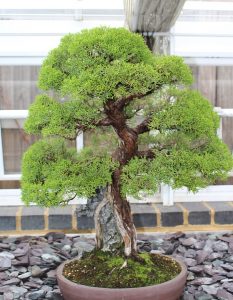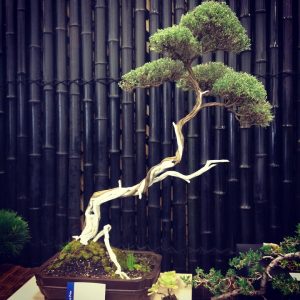Bonsai is the art of planting and cultivating trees in a pot and shaping for a selected color, texture and shape.
“Bonsai” translates from Japanese to mean “tray planting”, but bonsai has evolved over the centuries to an art form.
 Bonsai trees are shaped into intricate styles – it may take years to achieve the desired shape. Once the initial shape has been obtained, the tree is continually trimmed to maintain the design. Bonsai is a fascinating hobby that takes time to perfect but is challenging and rewarding.
Bonsai trees are shaped into intricate styles – it may take years to achieve the desired shape. Once the initial shape has been obtained, the tree is continually trimmed to maintain the design. Bonsai is a fascinating hobby that takes time to perfect but is challenging and rewarding.
It is important that when you are first starting out with bonsai that you have a general idea of what it is that you want to achieve. Even expert and experienced bonsai creators have some personal concept of what it is that bonsai means to them. You need to make your own decision about what you want to see when you are finished dwarfing and shaping your bonsai tree.
Before beginning a bonsai project, find out as much information as you can about bonsai in general, so you understand the direction to pursue. A good starting point could be collecting pictures of bonsai you find appealing combined with information on how to achieve this style. Many areas have local bonsai nurseries, bonsai shows, or bonsai exhibitions as part of a botanical garden. When starting your first bonsai project, select inexpensive materials which will allow you to experiment without concerns for the costs.
There are two primary bonsai styles: “koten”, or classical bonsai; and “bunjin”, or informal bonsai.

The bunjin style is the opposite – the bottom is narrow and the top grows wider.
With a basic understanding of the bonsai styles, you can move onto to creating variations developed by other bonsai hobbyists. Eventually, you’ll be able to add your own unique style to your bonsai creations.
